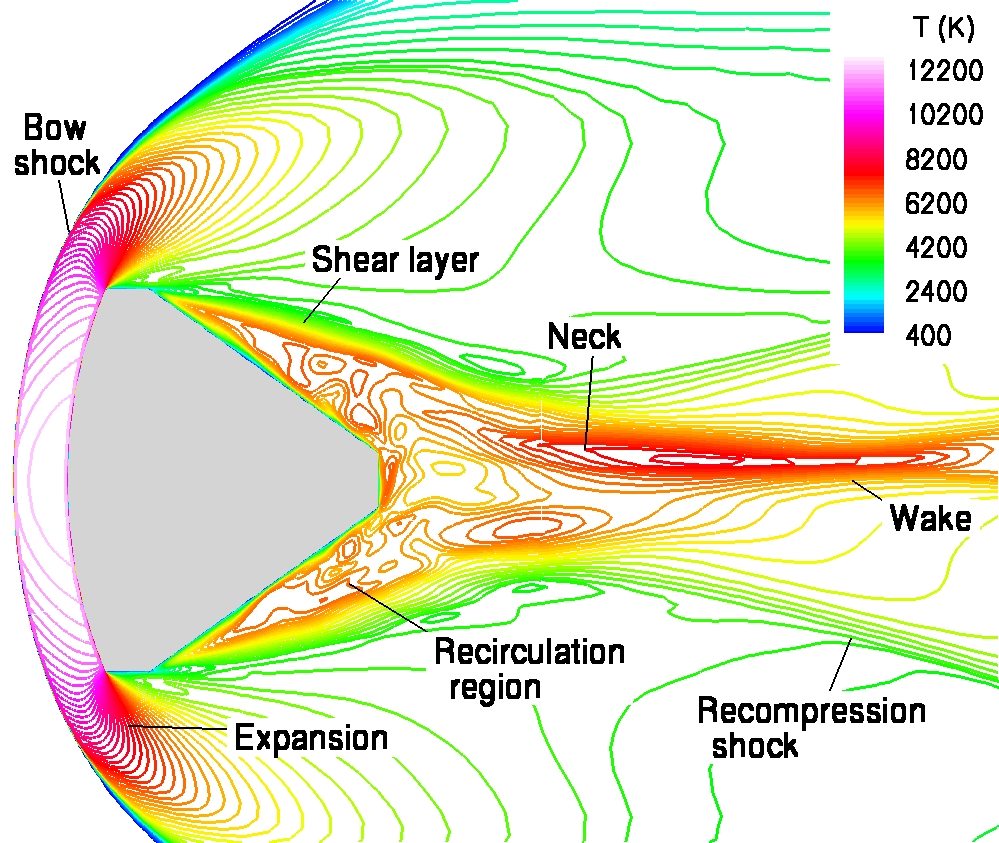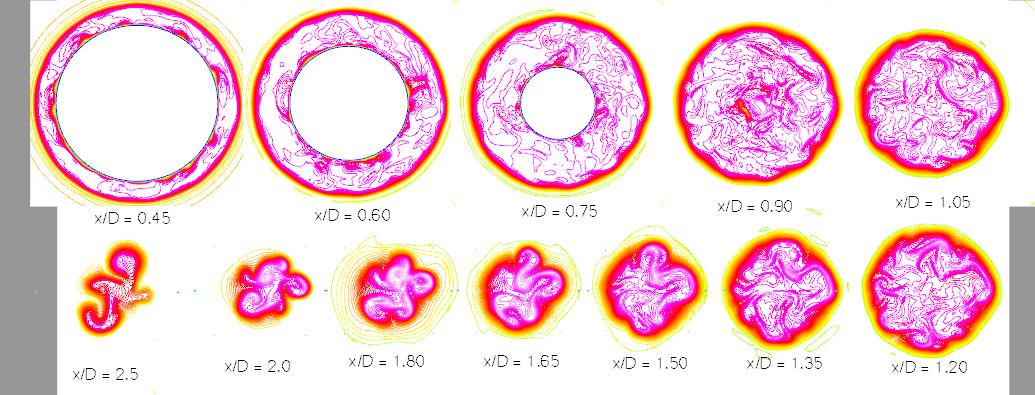Grid Sensitivity of Detached eddy simulation of a Mach 16 Re-entry Configuration :
This paper presents analysis of hypersonic base ows using the detached eddy simulation (DES) methodology.
Unlike Reynolds-averaged Navier-Stokes (RANS) simulations, DES computes the dominant unsteady motion in the
three-dimensional ow behind a vehicle, and thus results in a more realistic ow field than RANS. Simulations are performed
on carefully designed DES grids and the effect of grid refinement in the focus region is studied. At the current
conditions the ow in the near wake is transitional. Successive grid refinement in this case reduces the magnitude of the
eddy viscosity such that the DES solution on the finest mesh approaches direct simulation without a turbulence model. In
the absence of significant eddy viscosity, lowering of numerical dissipation is essential to achieve grid-converged
solution.
Ref: Sinha, K.,Candle,Graham V., "Grid Sensitivity of Detached eddy simulation of a Mach 16 Re-entry
Configuration". 45th AIAA Aerospace Sciences Meeting and Exhibit, Nevada, Reno, 2007.
Sinha, K., "Effect of Reynolds Number on Detached Eddy Simulation of Hypersonic Base Flow" 45th AIAA Aerospace Sciences
Meeting and Exhibit, Nevada, Reno, 2007.
Representative results:

Temperature contours showing the 3D unsteady flow field around the re-entry capsule.

Cross-sectional view of 3D unsteady wake behind the re-entry capsule at different streamwise locations .

